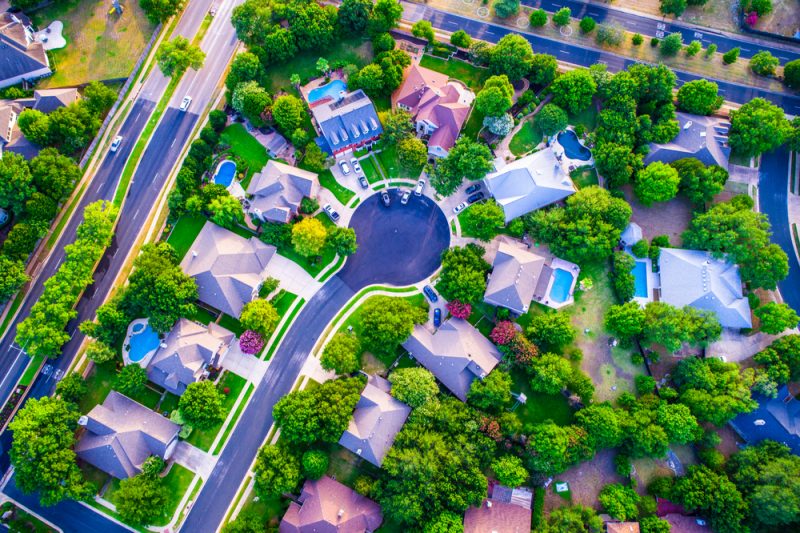5 home purchase and maintenance choices that will save money and the planet – in honor of Earth Day, 2019.
For present and future homeowners alike, here are five ways to conserve energy, resources and lower pollution that you should consider in your home selection and upkeep. Being mindful of these will surely improve your quality of life, improve your community, the planet, and your family’s bottom line.
Look for Homes with a High Energy Efficiency Rating
If you are buying a home, consider a newer build that offers a high energy efficiency rating. Not only will you save energy and reduce your carbon footprint, but you will also save money!
On a typical 2000 square foot, 2-story home, you could save over $120/month by buying a new home vs. a 20-year-old home. This energy savings translates into buying-power of about $20,000. Today’s new homes are much more efficient than homes built even 20 years ago, and far more efficient than those built before the 1980s.
Using the HERS (home energy rating system) rating system, where a zero-energy house scores 0 on the HERS scale, and a typical home built in the early-2000s will score around 100, consider homes that score in the 50s and lower – lower is better.
Don’t Burn Money
When I think of wood fireplaces I think romance, heart and soul. There’s really not much better than relaxing in the radiating warmth of a wood-burning fire. The problem is unless your fireplace is up to current standards, you are burning money and contributing to indoor and outdoor air pollution. Typically, fireplaces are very inefficient. The energy efficiency of burning wood in an open fireplace can be as low as 10% – that means 90 percent of the energy goes up the chimney and is wasted!
Direct vent fireplaces (the ones with the glass panel on the front) are highly-efficient because they have a sealed firebox and don’t use indoor heated air in combustion. In some cases they are as efficient as a furnace. They’re perfect for heating a single room, such as a family room, and are turned on and off with a light switch. This type of fireplace is up to 90 percent efficient!
If you really want to burn wood, the only energy efficient option is a wood burning fireplace insert or a wood stove. These are sealed systems that intake air from the outside and don’t pull any heated interior air out of the home. A quality wood burning fireplace insert or a wood burning stove can be a beautiful feature of your home. They also make a great alternative source of energy during a power outage.
Consider the Costs of Commuting
When house shopping it is easy to focus on “inside the four walls” criteria – room size, square footage, amenities and finishes, and I’m sure you have noticed that the further you get from town the lower the price per square foot. For X dollars, we can get these additional finishes and features! At face value, it does seem like a better deal.
Take a minute to look at the total cost of the extra driving. Car costs, time spent in the car, gas, etc. Make sure to not only count your commuting time, but also shopping, running the kids around to soccer practice, piano lessons, etc. That all can add up quickly and are rarely fully considered by buyers.
Your car costs about 55 cents per mile to operate based on IRS numbers. If you drive an old car with good gas mileage your cost may still be closer to 35 cents per mile. Some calculations consider the cost as high as 70 cents per mile. At these costs, if you live 3 miles away from the nearest grocery store vs. 8 miles away, then each trip to the grocery store may cost you an extra $2.50 per trip each way.
As far as commuting goes, this calculator from Strong Towns says that each mile commuted costs $795 per year. That money, if put in your retirement savings, compounded over a 30-year career, comes out to about $100,000 in lost retirement funds per additional mile commute!
These factors do not consider the cost to society of the additional pollution or the public subsidies for road construction and maintenance. In Michigan, the governor is proposing a $.45 gas tax to cover the roughly 1.5 billion dollars needed to repair our roads. When that happens, we will begin to get a much clearer picture of the actual costs of driving.
Select Energy Efficient Appliances.
Make energy efficiency a primary consideration when choosing a new furnace, air conditioning unit, dishwasher or refrigerator. Furnaces and air conditioners are your major energy consumers. When it is time to upgrade, invest in high-efficiency systems. You will also notice better even heating and cooling, with quieter operation.
Have an Energy Audit Done and Implement Improvements
An energy audit is an important step in helping you identify ways to increase your energy efficiency. A home energy audit can cost as little as $100 or up to $400 depending on the level of assessment. DTE also offers rebates and other incentives to help their customers cover the cost of an audit. Learn more about DTE’s energy audit assistance at www.dteenergy.com.
Some additional energy saving tips you can do yourself, or as a result of an energy audit, are available in this short booklet from the U.S. Department of Energy and at their Energy Savers website.
According to Wikipedia, “Earth Day is an annual event, celebrated on April 22, on which events are held worldwide to demonstrate support for environmental protection. It was first celebrated in 1970, and is now coordinated globally by the Earth Day Network and celebrated in more than 193 countries each year.”
What are you doing to be mindful of and to conserve the abundance that we have been gifted?











